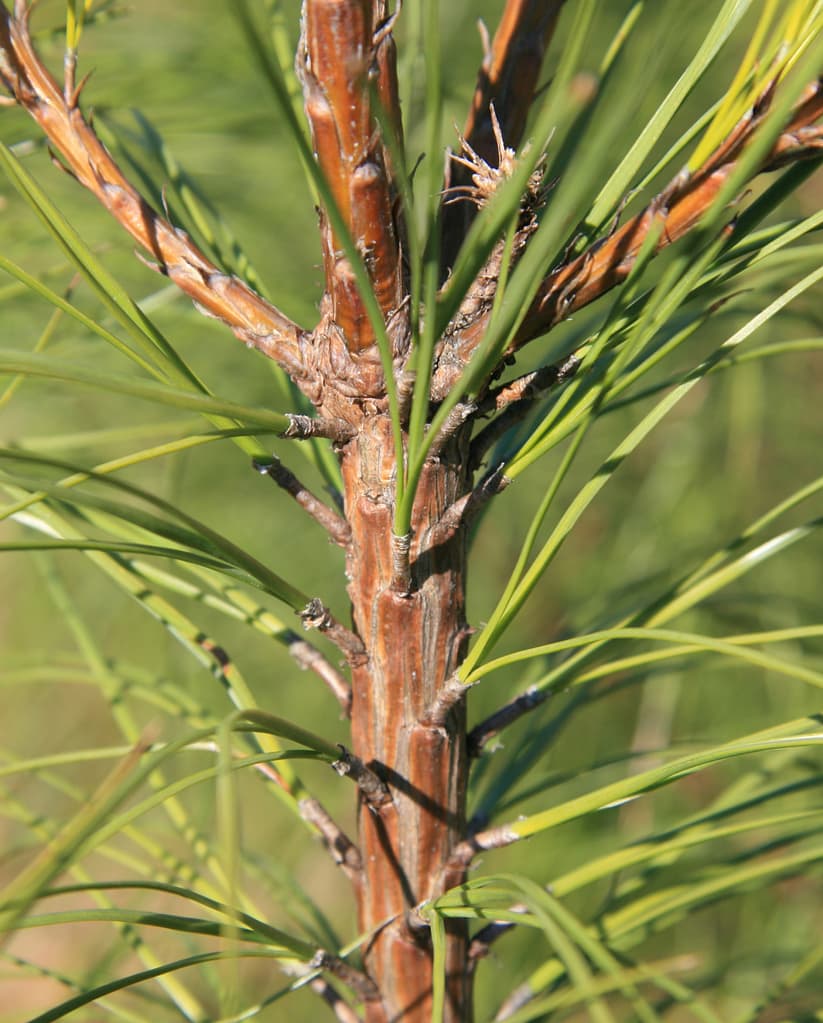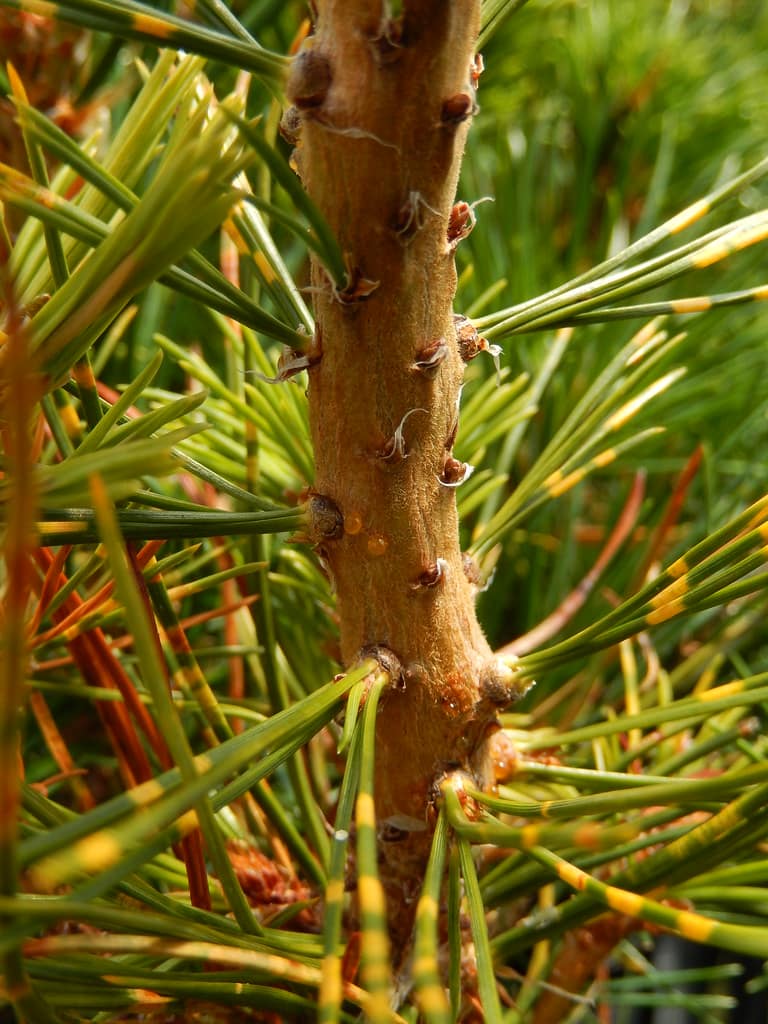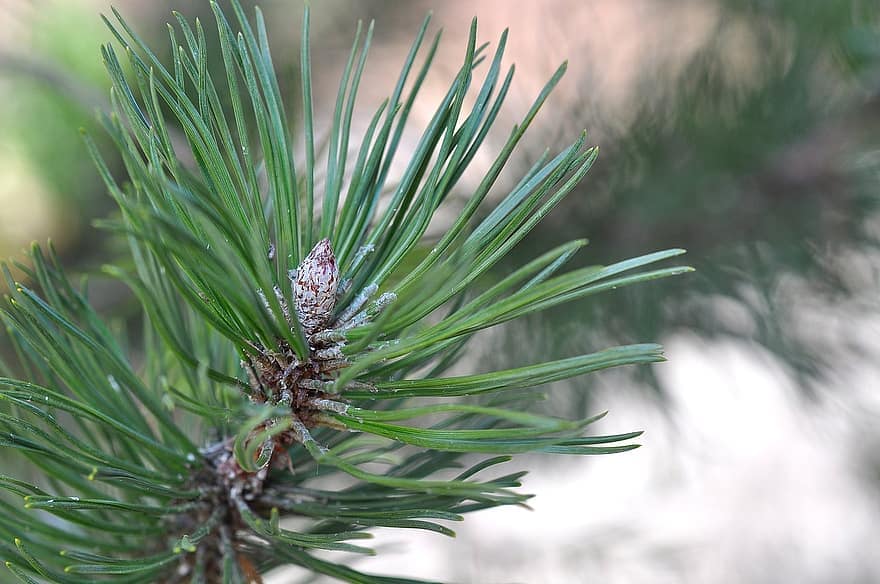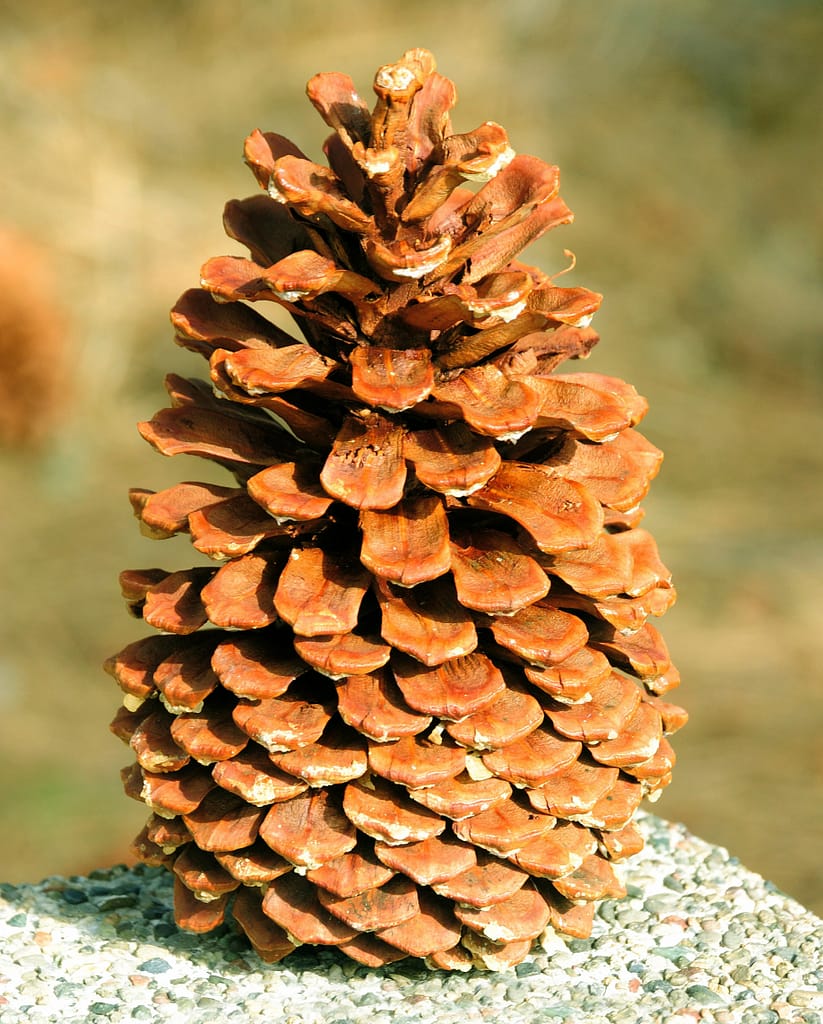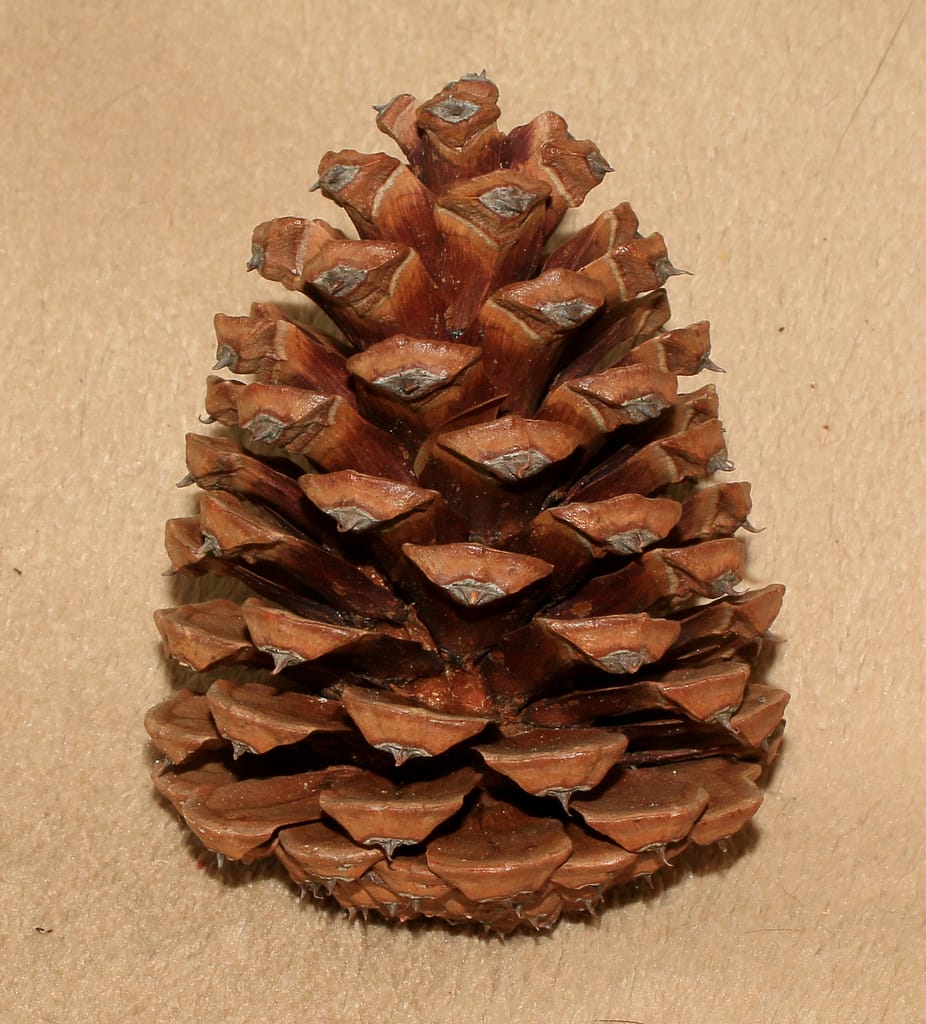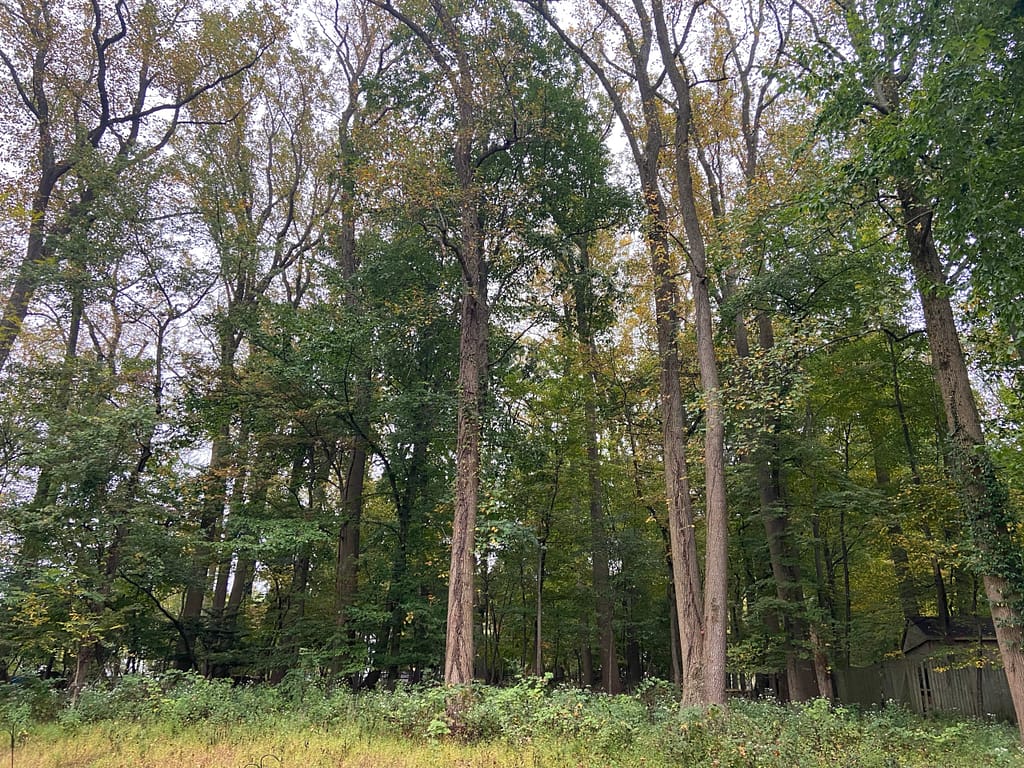
Identifying a tree is a skill envied by many. While simplistic in the ruling out process, the knowledge of all possibilities is generally reserved for those that spend a significant amount of time around trees. Regardless of skill level in identification, information is the key to successful identification. The more information you can gather (or take pictures of), the easier the process becomes. For starters, here is a list of beneficial photos or pieces of information that can aid in identification of a tree:
- Leaf/Needles – a photo is best, but if no photo is provided, a thorough description of the leaves is of utmost importance. Details of the leaf will be discussed below
- Evergreen or Deciduous – This detail, along with the previous bullet, are primary separators used as a basis for further investigation.
- Leaf Structure – Are the leaves simple, compound, pinnately compound, or fan shaped? This is one of the first steps in identification.
- Thorns – Thorns are a separating factor for several species and is one of the last ways to classify certain species.
- Seeds – Knowing what the seeds look like can immediately classify the tree into a family or genus that aids in identification.
- Growth Habit – This may not always be an obvious piece of information, but can sometimes be important in idenfiying certain species.
- Bark – Many trees are nearly identical in everything except bark. Chinese Elm and Siberian Elm are a prime example of this.
- Flowers – Flowers, while not always present, can be the identifying factor of certain species.
- Location (Environment) – Knowing what grows where helps drastically in choosing potential species for possible identification
- Buds – Buds can be a last resort, or be an obvious identifier in the winter time.
As mentioned above, photos are extremely helpful in identification, and the average person has a phone in their pocket these days. Regardless of where you are or what time of year you’re there, the most important photos you can get are clean images of the leaves, branching/leaf structure of a branch, any seeds or flowers, and then knowing giving a general location of the tree.
Identification Apps
There are many resources for identification through apps, websites, and leaf ID keys that I will list below. One of the small inconveniences of these tools is that they stop at a certain point. Some may only be for trees in the Eastern United States, others may not include exotic (non-native) species, while another gives only the species and not any more information (Saying it is a red maple, but in reality it is a red maple hybrid with silver maple, a red maple cultivar, named Autumn Blaze Maple). Some apps may have all of the previous problems. This leads to reasonable frustration when trying to identify your weeping blue atlas cedar that won’t come up in any of those tools.
- iNaturalist – This is probably the best app overall in my opinion (I’ve only used the first 3) overall and you can get confirmation from others that agree with the suggestion you’ve selected.
- PictureThis – This app has an annoying ad that constantly comes up in the free version, but it goes a decent job of identification or at least leading you in the right direction.
- LeafSnap – The little I’ve used this app I’ve been pleased.
- Arbor Day Foundation – https://www.arborday.org/trees/whattree/ – Good for native species and if you know plant terminology
- Leaf-ID.com – https://www.leaf-id.com/ – Helpful due to photos accompanying the species to scroll through
If you’re looking into tree identification more seriously, I recommend you take a look at this website as it is very thorough and explains little details that are important in the long term. – https://www.treemusketeers.net/tree-identification/
Identification Example
I want to go through an example of identification to show the process to eliminate certain possibilities and choose the correct suggestion when using different apps.
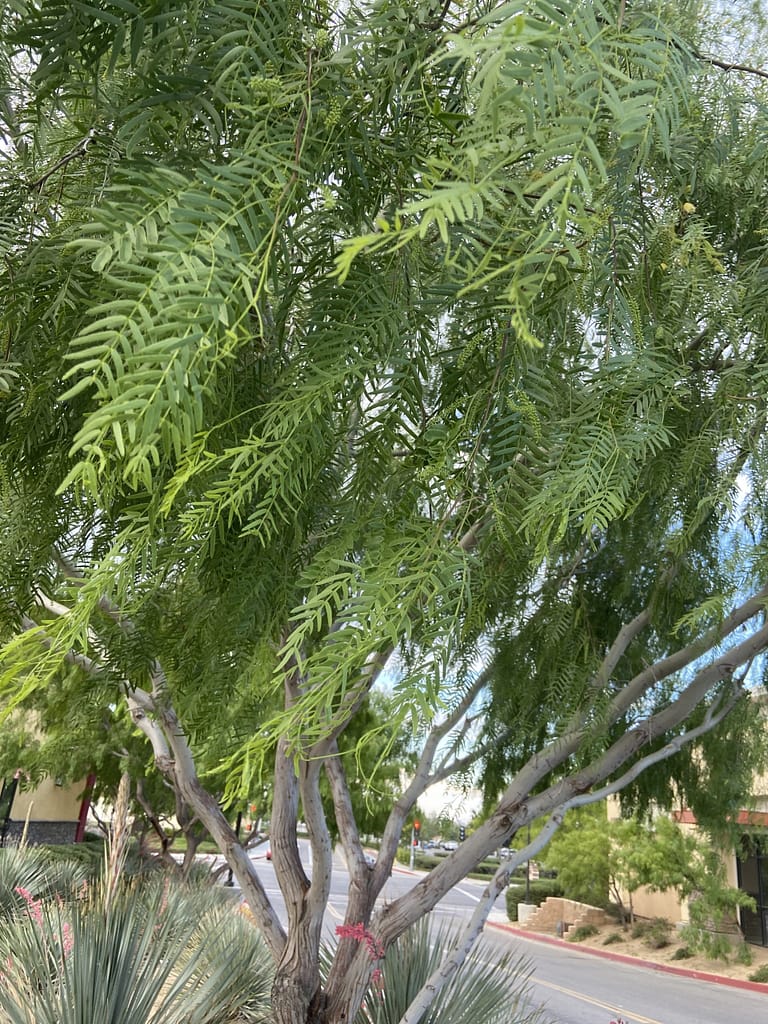
This photo from a parking lot shows a tree with pinnately compound leaves. The photo is by no means superb when it comes to being helpful with identification, but we’ll work with what we got. By putting this photo into a tree ID app called Leaf Snap, I get the following suggestions: Jacaranda mimosifolia (Jacaranda), Taxodium distichum (Bald Cypress), Prosopis glandulosa (Honey Mesquite), Delonix regia (Flame Tree), Gleditsia triacanthos (Honey Locust), Schinus molle (California Pepper), Prosopis juliflora (Mesquite), Acacia dealbata (Silver Wattle), and 3 other options that aren’t even close (Pine, Fern, and Cypress). This gives us a lot to go off of.
I typically give the first few suggestions the most creedence when searching for more information. Let us start by gathering as much information about this photo as we can. While hard to tell, it looks as if the leaf sections come in pairs of about 11 sets of opposite leaves. Below we have a zoomed in portion of the photo that shows the flowers forming into seeds. The trunk is fissured into vertical sections and is multi-trunked. While the environment is obviously a parking lot, you can see additional plants nearby that will give us a hint to what conditions it might like. Red Yucca and Desert Spoon are both desert plants that thrive with little water and can be damaged by too much water (unfair advantage I know, as you may not know that off hand). The USDA zone of this location is also between 8a-9b or a zone 10/11 in the Sunset Western Garden Book. Lets see what we can get with this information.
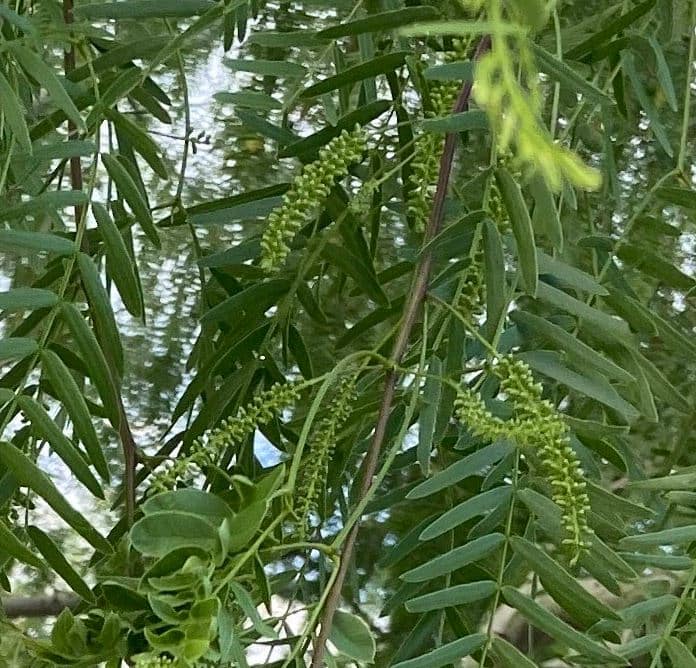
Jacaranda leaves look like this:

Bald Cypress leaves look like this:
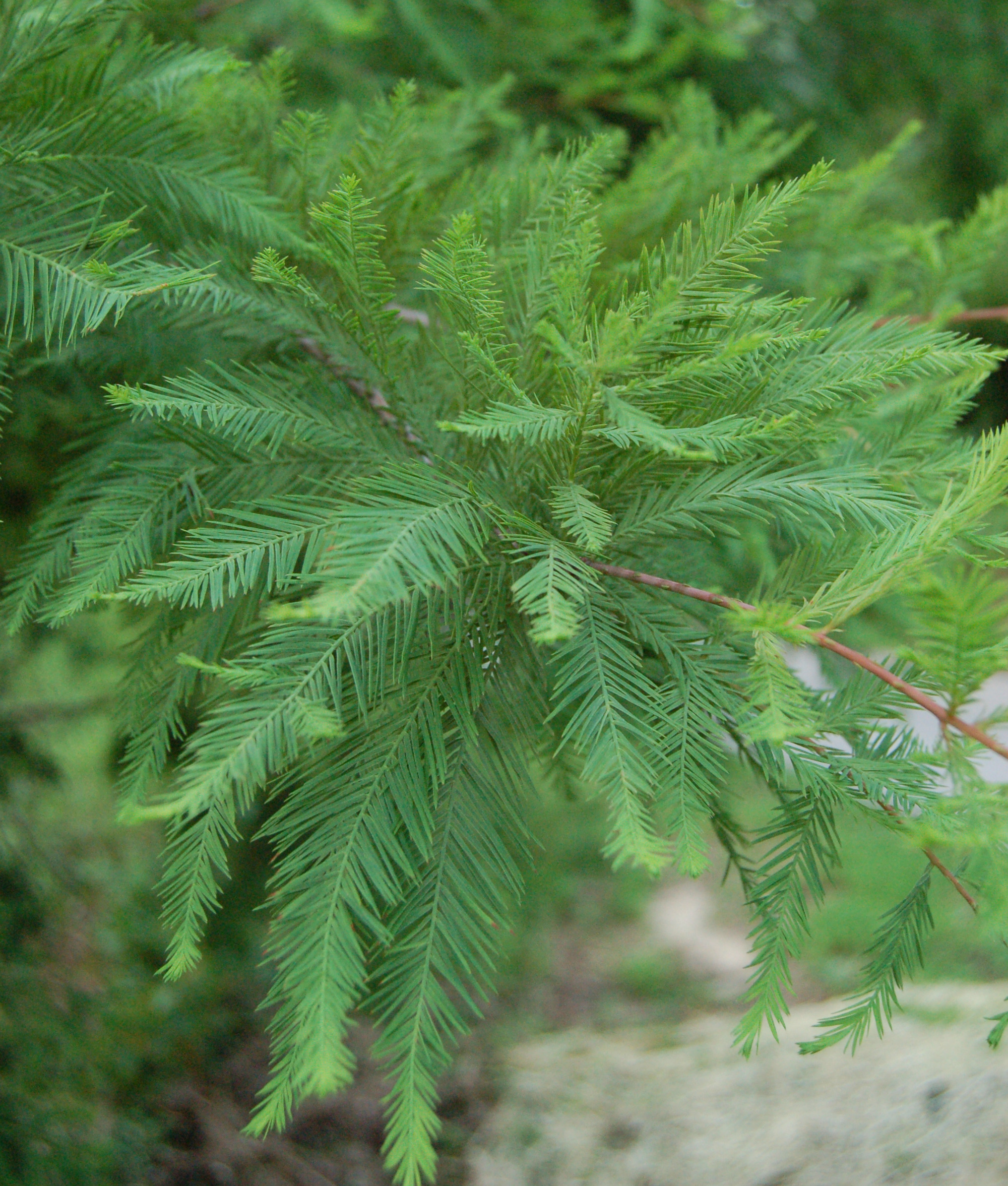
Honey Mesquite leaves look like this (I didn’t find any good photos that aren’t copyrighted, so you can click here to see other options: Honey Mesquite Leaves) :
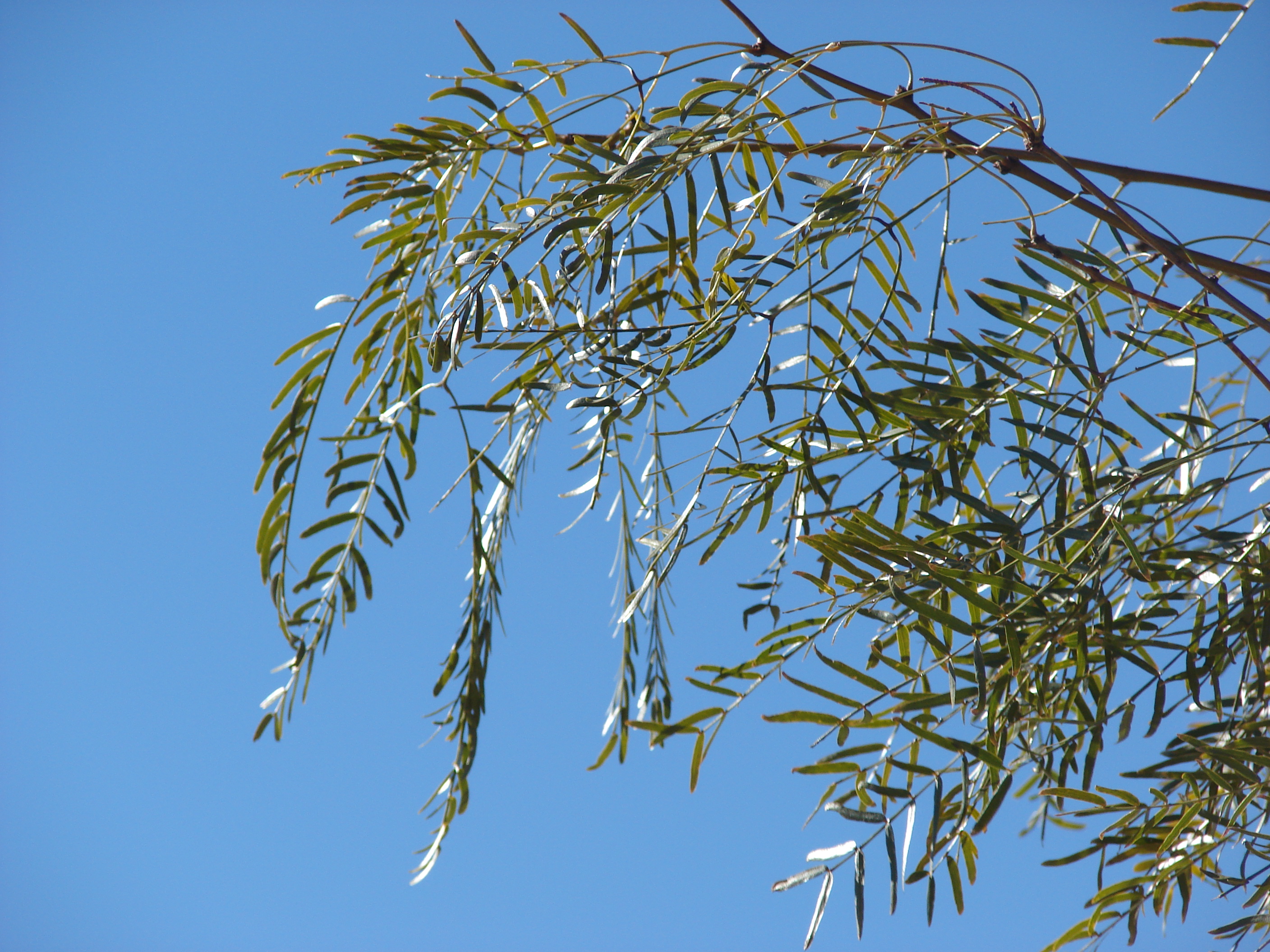
Flame Tree leaves look like this:

Honey Locust leaves look like this:
From these photos we can see (at least it is obvious to me) that the Honey Mesquite is the most similar leaf with maybe the honey locust as a close second. Let us look into the flowers turning into seeds. When we search for honey mesquite seeds and flowers this is an image that comes up:

As we continue, the bark looks similar, the zones line up (7-11 USDA and Sunset zones 7-24), low water requirements line up, and the leaves can have between 8-20 pairs of leaflets. While you might still question whether it is a mesquite, or California pepper tree, further inspection will show that California pepper tree leaves have a single leaf at the end of the opposite pairs of leaves, and the bark is different. The mesquite is not commonly planted as it has been invasive in other areas, so one can deduce that it wouldn’t be chosen as a street tree.
Things that could have made this easier is seeing the actual seeds in the form of a seed pod, checking for thorns, getting a better close up view of the leaves and structure their structure, and knowing it was deciduous. Nonetheless, we figured it out without all of this information.
Another important things to consider when identifying trees in urban areas is that there are numerous cultivars (man made alterations) to many trees. These are regularly done to do things such as removing thorns, strengthening branches, changing colors of flowers, better fall leaf color, etc., so disqualifying a certain species because it doesn’t have one specific characteristic can also prove to be incorrect as well.
Identifying Evergreens and Pines
When you aren’t looking at a broad-leafed tree, you may wonder “How do I describe the needles or scales?” There are a few major differences that are important.
- First is whether the foliage is “awl”-like, “needle”-like, or “scale”-like. Junipers and Siberian Cypress have “awl”-like foliage, Arborvitae and False Cypress have “scale”-like foliage, and nearly everything else has “needle”-like foliage (Pine, Fir, Yew, Hemlock, Spruce, etc.).
- How many needles come from one point (typically in groups of 2, 3, or 5) can be helpful in identifying pine species.
- Cones or seeds are frequently on the tree regardless of season, and can be significant identifiers as well.
- Length and size of needles and cones can be integral in identification, so be sure to measure at least roughly.

3 Needle Pine 
5 Needle Pine 
2 Needle Pine
Cones vary greatly and are sometimes the sole identifier.
Jeffrey and Ponderosa Pine trees are differentiated by their pine cones. The phrases “Prickly Ponderosa” and “Gently Jeffrey” are used to describe the edges of the pine cones that have a point on ponderosa pine cones and are rounded on the edge of Jeffrey pine cones.

Jeffrey Pine Cone 
Ponderosa Pine Cone
Having all of this as a generalized knowledge helps us know that the more information we gather, the better chance we have at identifying the tree. You now know what information to gather, and have a good base to go off of.
A reminder that when looking for specific cultivars of certain species you’ll have to notice other specific things to help identify that cultivar. Things such as no seeds/flowers, different colored flowers or leaves (or different fall color), weeping/columnar/spreading/twisted/small growth habit, or a graft union at the bottom of the trunk are all signs of a tree cultivated for specific genetics for the nursery industry.

